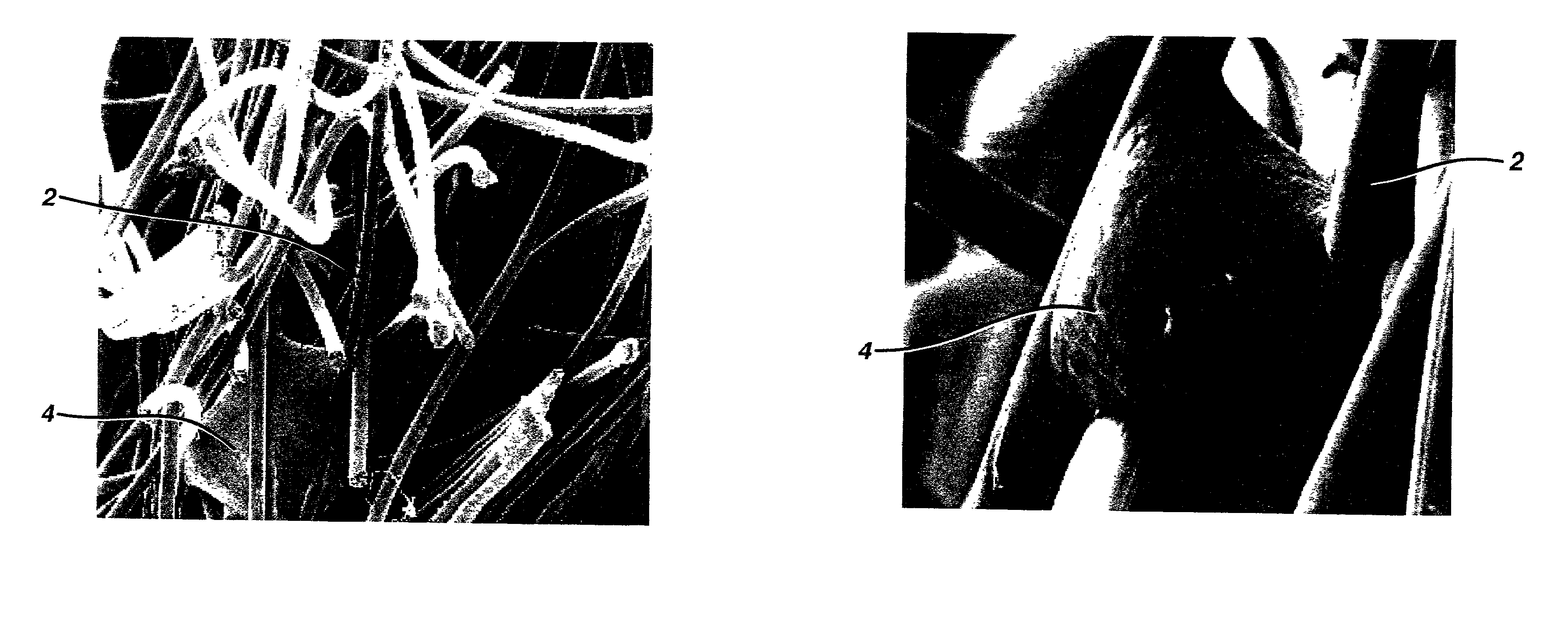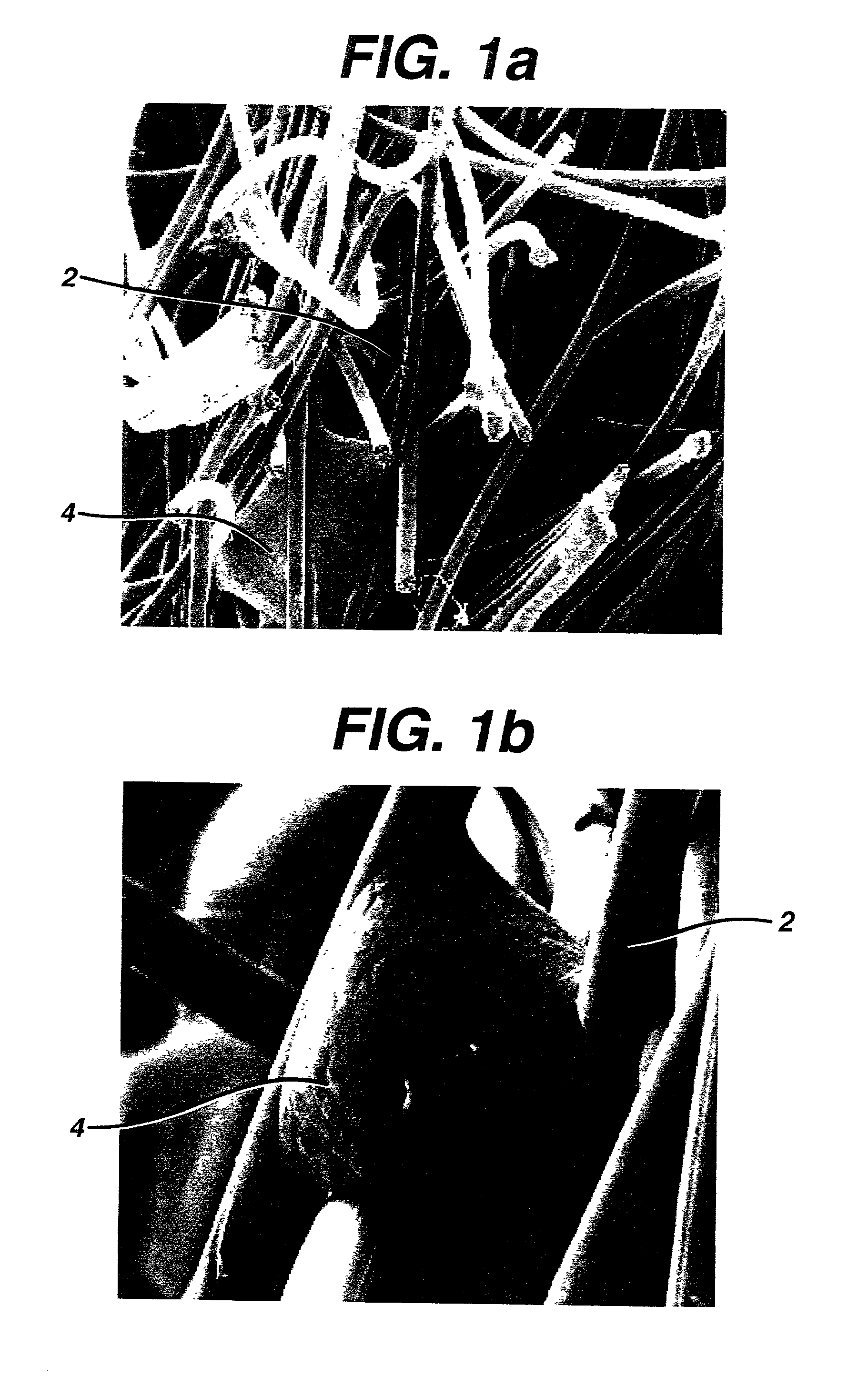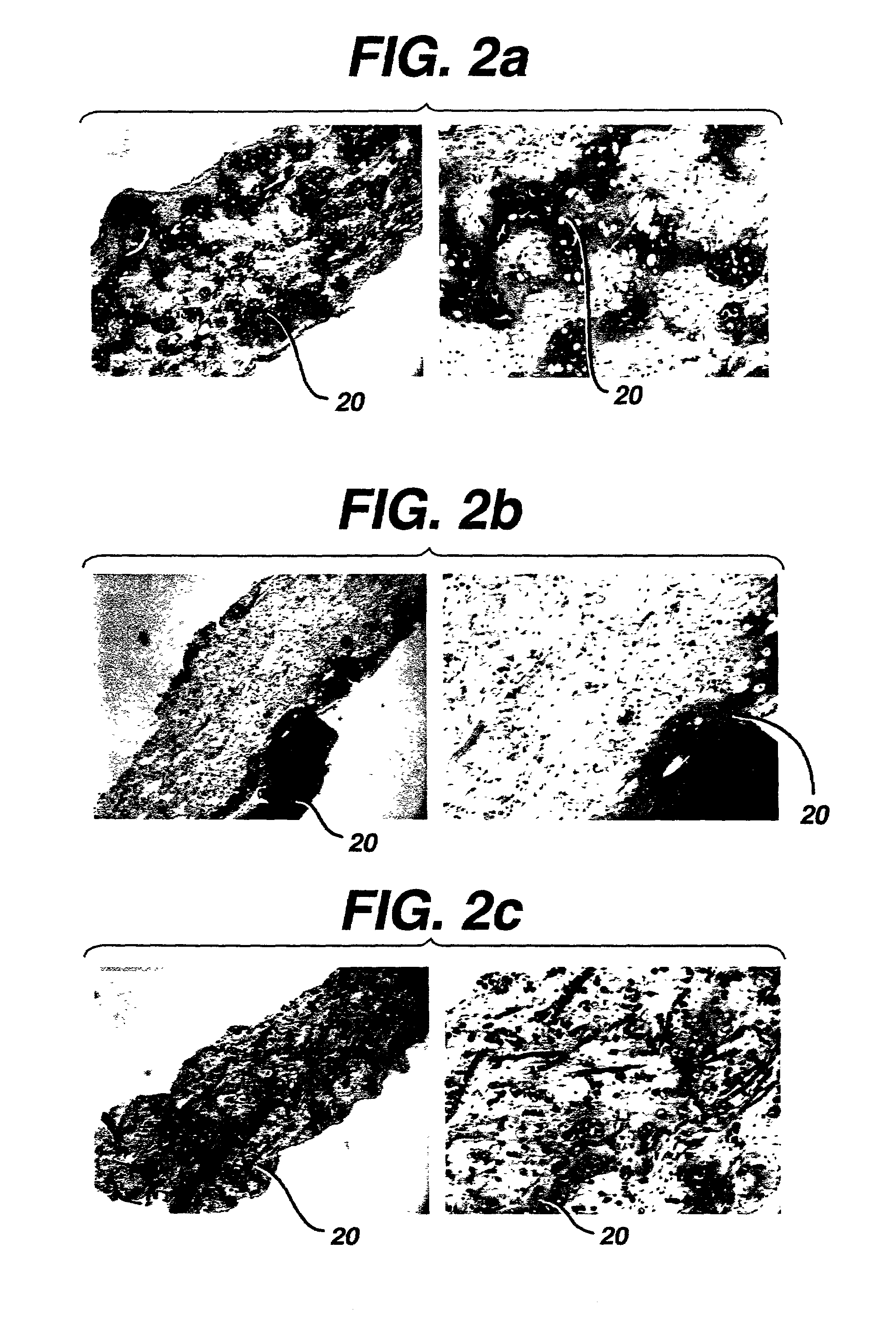Implantable biodegradable devices for musculoskeletal repair or regeneration
a biodegradable, implantable technology, applied in the direction of prosthesis, bandages, pharmaceutical delivery mechanisms, etc., can solve the problems of limited durability, loss of functional tissue surrounding, and inability to substantially restore the original function of the tissue,
- Summary
- Abstract
- Description
- Claims
- Application Information
AI Technical Summary
Benefits of technology
Problems solved by technology
Method used
Image
Examples
example 1
[0051]This example describes the preparation of three-dimensional nonwoven fibrous matrices, or mats, according to the present invention.
[0052]A copolymer of PGA / PLA (90 / 10) was melt extruded into continuous multifilament yarn by conventional methods of making yarn and subsequently oriented in order to increase strength, elongation, and energy required to rupture. A copolymer of PLA / PGA (95 / 5) was also extruded into continuous multifilament yarn via conventional means and oriented using a different set of conditions to increase its physical properties. The yarns from both of these copolymer systems comprised filaments of approximately 20 microns in diameter. These yarns were then cut into uniform 0.5 inch lengths to form 0.5 inch staple fiber.
[0053]A number of wet lay nonwoven matrices were then prepared utilizing predetermined fiber selection as follows: (a) 100% of fiber prepared from the (90 / 10) PGA / PLA copolymer; (b) 100% of fiber prepared from the (95 / 5) PLA / PGA copolymer; (c) ...
example 2
[0056]This example describes the preparation of three-dimensional nonwoven matrices, or mats, containing a binding agent. Staple fibers were prepared as described in Example 1. A number of nonwoven mats were then prepared utilizing fiber selection as follows: (a) 100 percent by weight (90 / 10) PGA / PLA; (b) 100 percent by weight (95 / 5) PLA / PGA; (c) 50 / 50 percent mix by weight of (90 / 10) PGA / PLA and (95 / 5) PLA / PGA; (d) 95 / 5 percent mix by weight of (90 / 10) PGA / PLA and (95 / 5) PLA / PGA; (e) 5 / 95 percent mix by weight of (90 / 10) PGA / PLA and (95 / 5) PLA / PGA; (f) 75 / 25 percent mix by weight of (90 / 10) PGA / PLA and (95 / 5) PLA / PGA; and (g) 25 / 75 percent mix by weight of (90 / 10) PGA / PLA and (95 / 5) PLA / PGA.
[0057]Medical grade Polycaprolactone (PCL) (Birmingham Polymers, Incorporated, Birmingham, Ala.) was sieved through a screen in order to filter out particles greater than 150 m in size. Twelve grams of staple fiber and 2.4–6.0 grams of PCL powder were dispersed into 1,926 cubic inches of water. ...
example 3
[0063]This example describes the preparation of three-dimensional nonwoven matrices, or mats, containing absorbable glass fibers.
[0064]Staple fibers of (90 / 10) PGA / PLA and (95 / 5) PLA / PGA were produced as described in example 1. In addition, absorbable glass fibers were used to form nonwoven mats. The absorbable glass fibers were composed of 50% phosphorous, 17% calcium, and 33% iron. The glass filament diameter was approximately 10–20 microns. All of these filament yarns were cut into uniform lengths of 0.5″.
[0065]A number of wet lay nonwoven cylinders were prepared utilizing fiber selection as follows: (a) 100 percent of the fiber from the absorbable glass fiber; (b) a mixture of 50 percent by weight of the fiber from the absorbable glass fiber and 50 percent by weight of the fiber from the (90 / 10) PGA / PLA copolymer; (c) a mixture of 50 percent by weight of the fiber from the absorbable glass fiber and 50 percent by weight of the fiber from the (95 / 5) PLA / PGA copolymer filaments; a...
PUM
| Property | Measurement | Unit |
|---|---|---|
| size | aaaaa | aaaaa |
| diameters | aaaaa | aaaaa |
| size | aaaaa | aaaaa |
Abstract
Description
Claims
Application Information
 Login to View More
Login to View More - R&D
- Intellectual Property
- Life Sciences
- Materials
- Tech Scout
- Unparalleled Data Quality
- Higher Quality Content
- 60% Fewer Hallucinations
Browse by: Latest US Patents, China's latest patents, Technical Efficacy Thesaurus, Application Domain, Technology Topic, Popular Technical Reports.
© 2025 PatSnap. All rights reserved.Legal|Privacy policy|Modern Slavery Act Transparency Statement|Sitemap|About US| Contact US: help@patsnap.com



